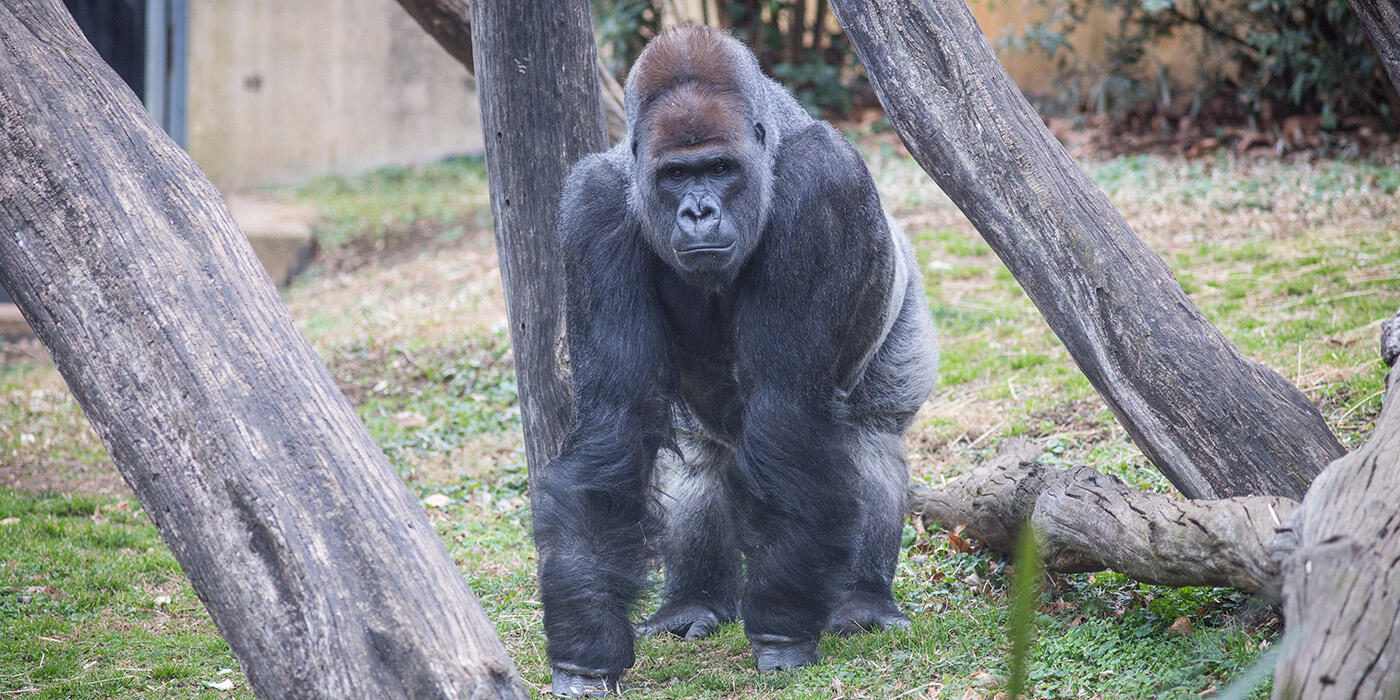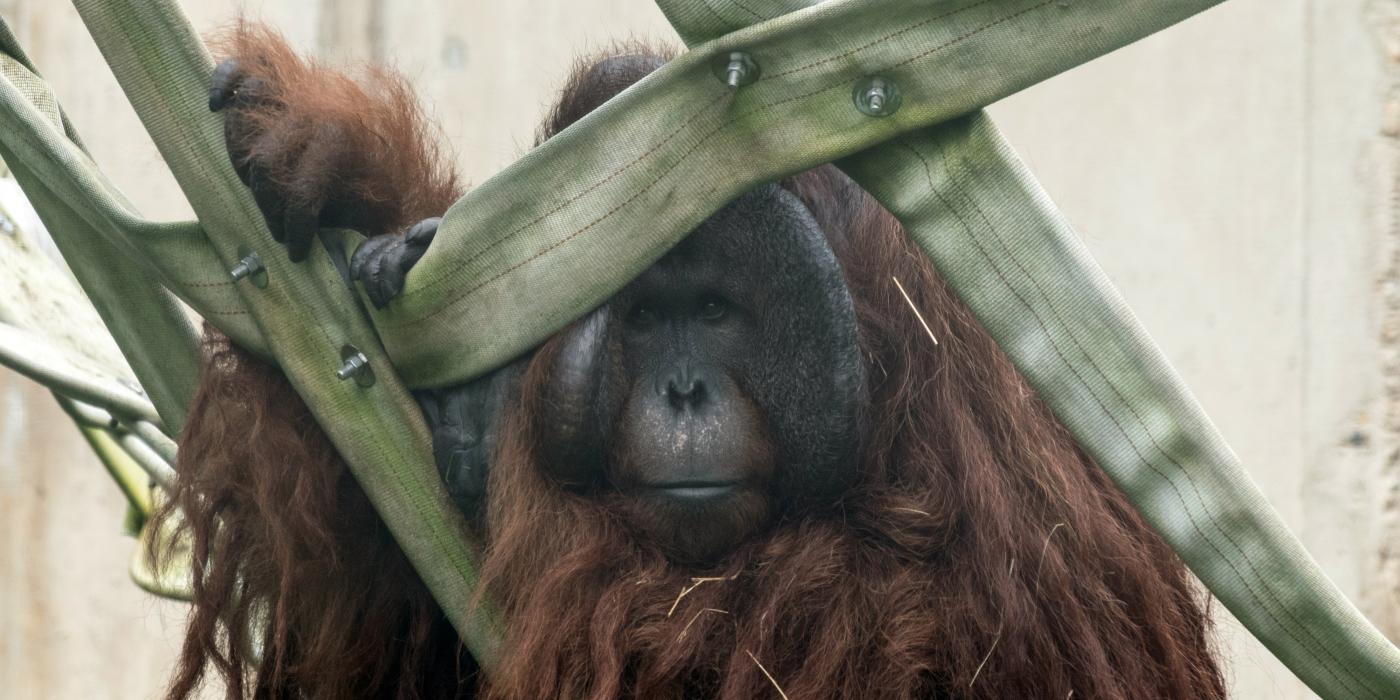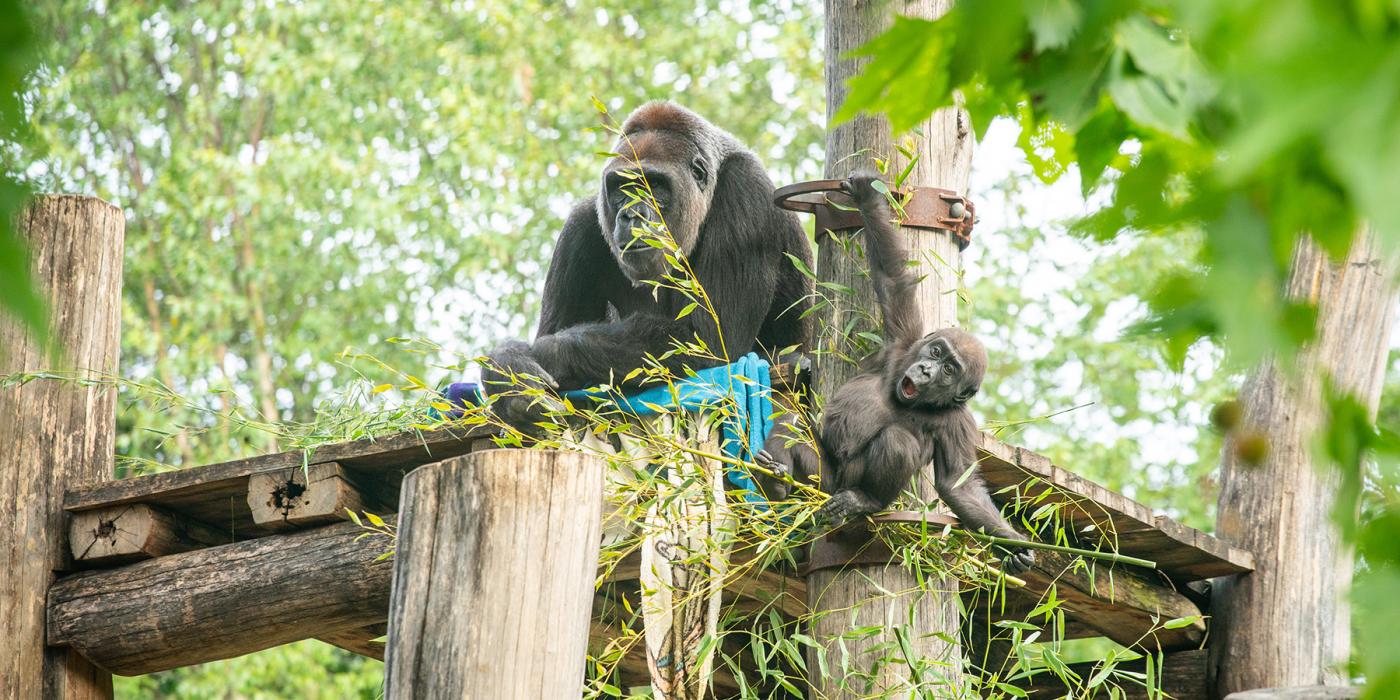#GorillaStory: Adventure Awaits
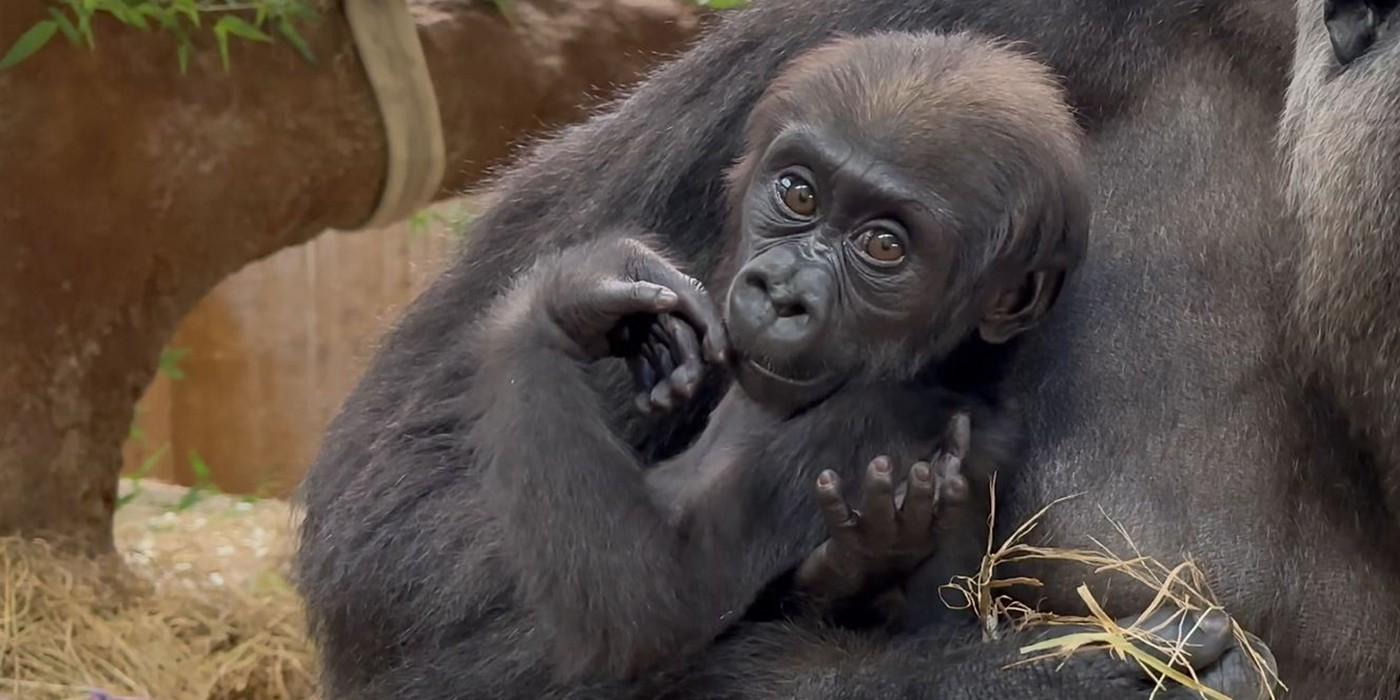
In a little over a week, our western lowland gorilla infant, Zahra, will be six months old! Overall, she is doing great and has recently started going on many little adventures around the Great Ape House.
I don’t think she quite realizes who keepers are in her life yet, but we are certainly an interesting addition to her environment. Recently, I was interacting with Moke at the mesh. Zahra walked over and purposefully reached out to touch my fingers. I was amazed at how small her hands are compared to the other gorillas’. It’s great that, even from a young age, she seems interested in interacting with us.
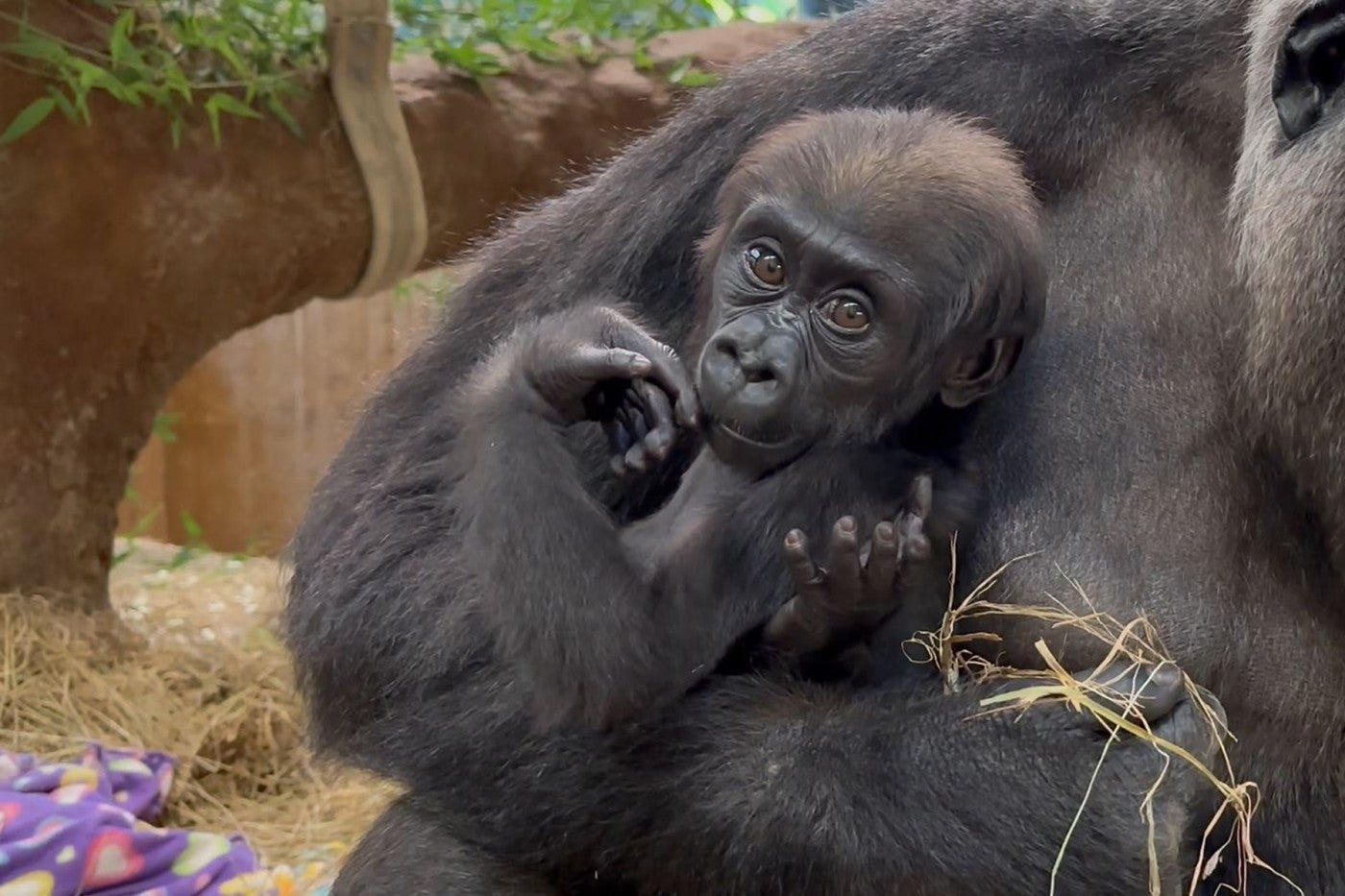
Western lowland gorilla infant Zahra is cradled in her mother Calaya's arms.
Zara’s personality is still emerging. For now, she is curious and a little sassy! The morning of Nov. 14, she barked at her mother, Calaya, for trying to take a paper bag out of her mouth! I think that as she gets older, she will give her mom – and everyone else in the troop – a run for their money.
Zahra’s primary diet is Calaya’s milk, though she has already started eating some solid foods, including vegetables, tomatoes and primate chow. If Zahra can get her hands on a food item, she will try it. However, it is up to Calaya what she actually gets to keep and savor. We have seen Calaya reach into Zahra’s mouth and pull a hard-won piece of food out of it!
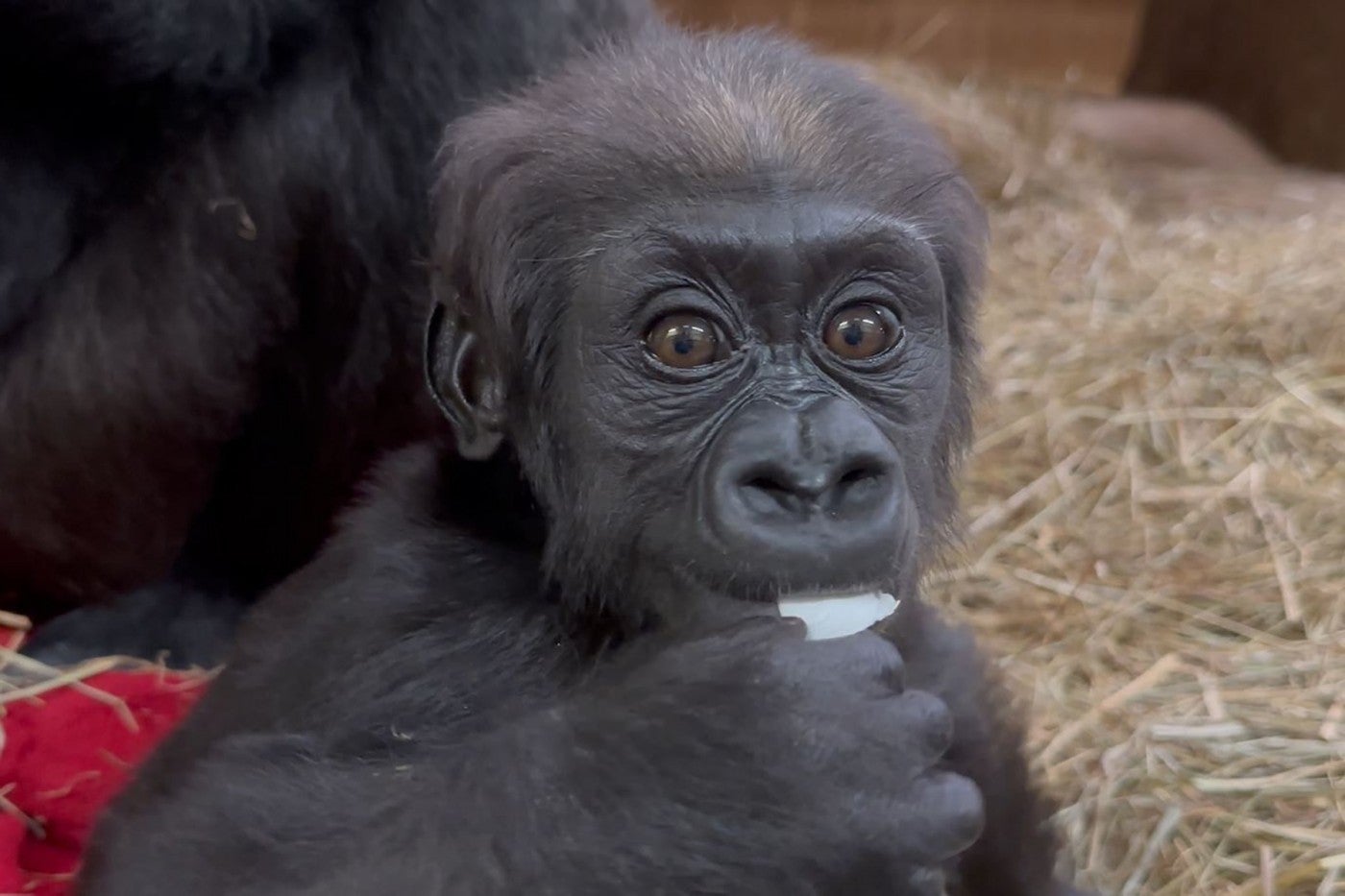
Western lowland gorilla infant Zahra snacks on some lettuce.
These past few weeks, Zahra has been on the move and is becoming more mobile. Often, she takes walks by herself – sometimes as much as 8 feet away from Calaya – and will even climb up the mesh of their indoor habitat. It is exciting to see her go where she wants to go, rather than mom making all those decisions for her.
Calaya is a wonderful mother. She allows Zahra some independence, but is always there when she needs her. Compared to when Moke was this age, Calaya seems more calm and confident with her role as a mother. She does not seem as worried about “unknowns” in her environment, including strange noises and unfamiliar faces. She also carries Zahra on her back much more frequently than she did with Moke, which is how most gorilla moms carry their babies.
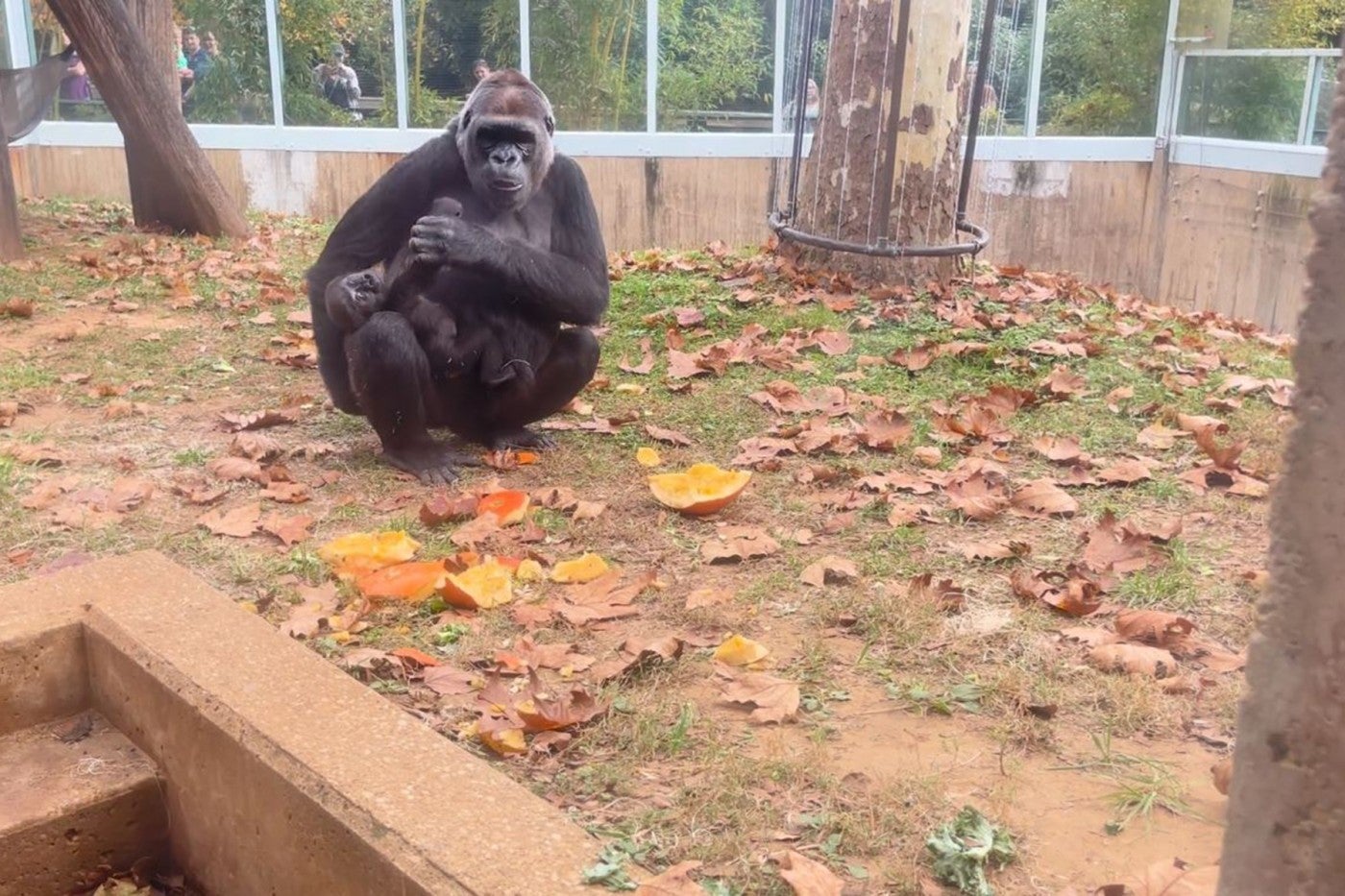
Western lowland gorilla Calaya and Zahra in the Great Ape House's outdoor habitat. Calaya is eating pieces of pumpkin.
Zahra is interested in everyone around her and seems to get excited when the other gorillas show her attention. Her big brother Moke, who is 5 years old, is pretty infatuated with her. Frequently, he will sit close to Calaya and Zahra. When Calaya is distracted, he takes the opportunity to touch Zahra, hold her foot or even bop her on the head. Brothers!
Their father Baraka’s interactions with Zahra are less frequent and more passive. If he is sitting near Calaya and Zahra reaches out to him, he will touch her with his lips or smell her. It’s so cute to see this super small infant reaching out to her 400-pound dad and seeing him be so gentle.
I have not witnessed any interactions among Mandara, Kibibi and Zahra. I think it is because Zahra is often attached to Calaya. As she becomes more mobile and independent, I expect their relationship to grow. At this point, Mandara and Kibibi have their hands full with Moke, who always wants to play and won’t leave them alone! I’m sure that, in time, they will have to deal with the same amount of attention from Zahra.

Western lowland gorilla Zahra in her mother Calaya's arms.
As we did with Moke and our 7-year-old Bornean orangutan, Redd, we will eventually train Zahra to voluntarily participate in her own husbandry and medical care. We train our great apes using positive reinforcement, a type of operant conditioning where we pair desired behaviors with rewards in the form of attention or treats. When we ask the apes to do a behavior, they can choose to voluntarily participate, knowing they will be rewarded.
Like human infants, Zahra will need a series of vaccines to keep her healthy as she grows. We are watching for signs that she is ready to begin voluntary injection training. First, we want to see Zahra venture further from mom and for longer periods, as well as interact more frequently with keepers at the mesh. Second, we need Calaya to consistently allow us to reward Zahra, rather than taking every piece of food away from her.
At the moment, Zahra isn’t ready to start injection training. But, I have every confidence that, when the time comes, she will be just as brave as the rest of her family.
If you are planning to visit the Zoo in the next few weeks, be sure to stop by the Great Ape House to see Zahra and her troop! Typically, she is most active between 10 a.m. and 2 p.m. The best time to see her is just after feedings, when the adults have settled down and she is able to explore the habitat more. Though, at this age, it is common for Zahra to nap between adventures!
This story appears in the December 2023 issue of National Zoo News. Want more #GorillaStory updates? Get the latest news on Zahra and the troop here.
Related Species:
